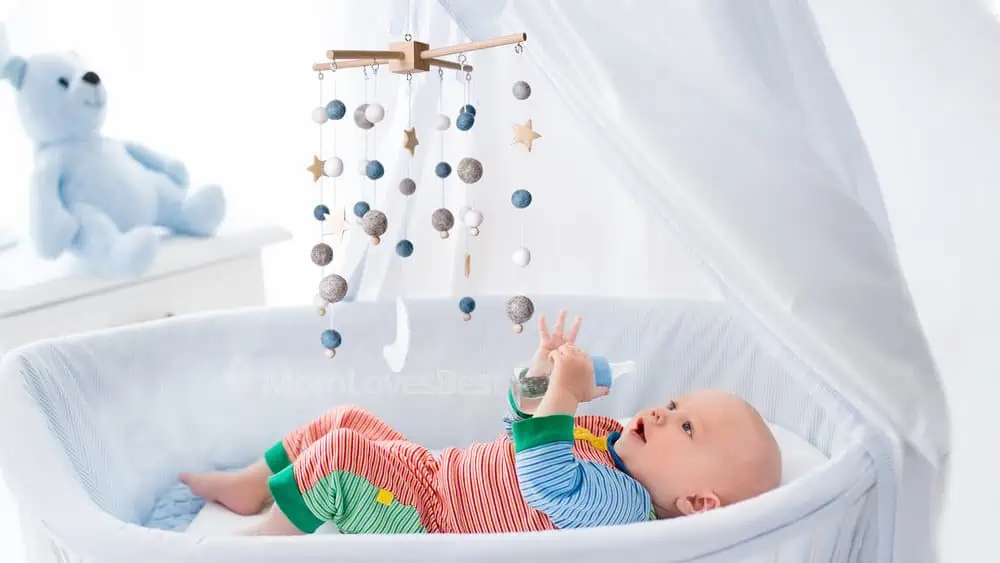Crib mobiles are a staple in nurseries around the world. These whimsical and often mesmerizing contraptions hang above cribs, captivating infants and providing them with visual and auditory stimulation.
Beyond their aesthetic appeal, crib mobiles serve multiple functions in a baby’s early development. In this article, we will explore the fascinating world of crib mobiles, from their history and benefits to safety considerations.
A Brief History of Crib Mobiles
The concept of mobiles dates back centuries, with origins in various cultures. Historically, mobiles were handmade, often crafted from natural materials like wood, feathers, and shells. However, it wasn’t until the mid-20th century that they became a popular nursery accessory.
In 1953, Danish designer Christian Flensted introduced the “Flensted Mobile,” which featured abstract shapes and minimalistic designs. This innovation marked the beginning of the modern crib mobile era. Since then, crib mobiles have evolved into a diverse array of styles, materials, and themes.
The Benefits of Crib Mobiles
- Visual Stimulation: Crib mobiles offer babies a visually stimulating experience. The gentle movement and rotation of colorful objects engage a baby’s developing visual system, enhancing their ability to track and focus on objects.
- Auditory Stimulation: Many crib mobiles include music or soothing melodies. The combination of visual and auditory stimulation can help babies relax and promote better sleep patterns.
- Developmental Benefits: Crib mobiles encourage infants to reach, bat, and grasp at the hanging objects. This motor skill development is crucial for their overall physical and cognitive growth.
- Sensory Exploration: Some crib mobiles incorporate textures and materials that encourage sensory exploration, such as soft fabrics and crinkly materials. This encourages tactile development.
- Soothing Effect: Crib mobiles can be calming for babies, helping them transition from wakefulness to sleep. The gentle movement and calming music can create a soothing bedtime routine.
Choosing the Right Crib Mobile
When selecting a crib mobile for your baby, consider the following factors:
- Safety: Ensure that the mobile meets safety standards. It should be securely attached to the crib, with no small parts that could pose a choking hazard.
- Age-Appropriate: Choose a mobile that suits your baby’s age and developmental stage. Some mobiles are designed for newborns, while others are better for older infants.
- Theme and Aesthetics: Select a mobile that matches your nursery’s theme or décor. Many options are available, from traditional pastel designs to modern and eclectic choices.
- Music or No Music: Decide whether you want a mobile with music or one that operates silently. Music can be soothing, but some parents prefer a quiet mobile.
- Materials: Consider the materials used in the mobile’s construction. Ensure they are baby-safe and free from harmful chemicals.
Conclusion
Crib mobiles are more than just decorative accessories in a nursery. They play a vital role in a baby’s early development by providing visual and auditory stimulation, promoting motor skills, and offering a soothing bedtime routine.
When chosen with safety and developmental considerations in mind, crib mobiles can enhance a baby’s environment and contribute positively to their growth and well-being.
So, whether you opt for a classic mobile or a modern, artistic design, you can rest assured that this simple addition to your baby’s nursery can be both delightful and beneficial.









